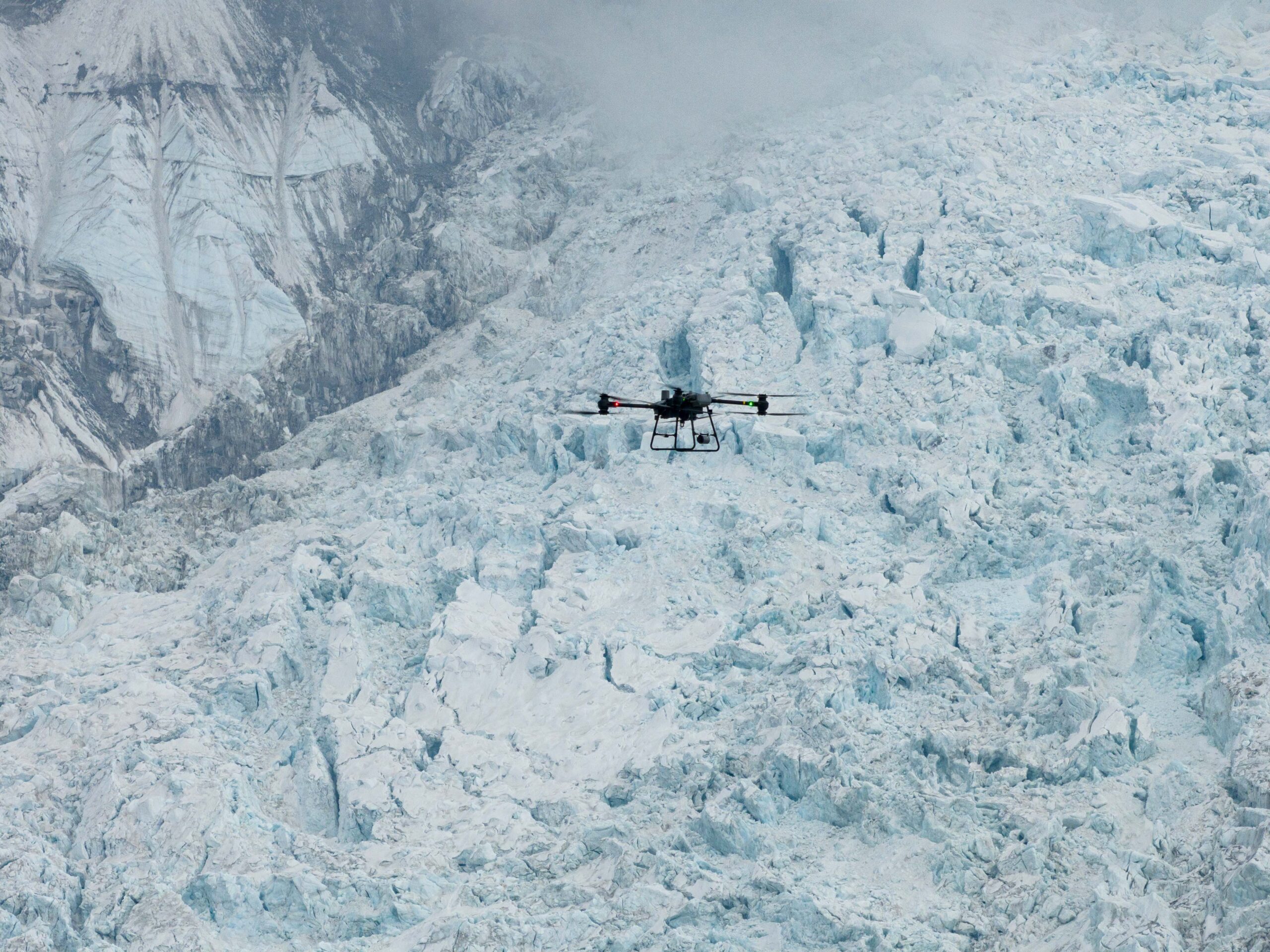Nepali drone company Airlift uses DJI technology to deliver oxygen, scout routes, and remove waste—making Everest expeditions safer for sherpas and climbers.
by DRONELIFE Staff Writer Ian J. McNabb
A Safer Way to Scale the World’s Tallest Peak
After testing concluded last year, Nepali drone company Airlift will begin deliveries of necessary supplies to Everest camps, revolutionizing the dangerous local transport industry and making the world’s tallest mountain just a little bit safer. Using DJI FlyCart drones, Airlift will carry needed supplies and scout routes for local sherpas while carrying down trash, helping to solve Everest’s litter issue while making traversing the icy peak less deadly.


Proven Success at Extreme Altitudes
Last year, DRONELIFE reported on the trials that served as a proof-of-concept for the drone flights. During the test, three oxygen bottles and 1.5kg (3.3lbs) of other supplies were flown from the Everest Basecamp (already at a dizzyingly high 17,000 feet above sea level) up to Camp 1, at nearly 20,000 ft of elevation. On the return trip, the drone carried trash.
Navigating the Khumbu Icefalls
The two camps are separated by the Khumbu Icefalls, one of the most perilous parts of the ascent, making it difficult to carry supplies between the two areas. While helicopters could theoretically complete the same delivery, this is cost-prohibitive and environmentally irresponsible, not to mention the dangers of operating in such a cold, oxygen-low environment. Instead, traditionally, this dangerous task falls upon sherpas, who must physically carry supplies in this often perilous environment.
Drones Assist, But Sherpas Still Lead the Way
Now, Airlift hopes drones can aid local guides. Milan Pandey, the pilot operating the DJI drones that power the project, operates flights out of Everest basecamp further up the hill. According to CNN, the Sherpas tell Pandey which direction they need to go, then Pandey flies a small drone first to navigate the trail.


While sherpas still need to carry most supplies themselves, as well as traverse the hill using their own skills, drones can make passing through the Khumbu icefalls easier.
“Once they find out ‘here we need a ladder,’ ‘here we need a rope,’ they will send us the coordinates via walkie-talkie and then we fly the equipment there,” Pandey explained. The drones are also able to fly in life-saving equipment like oxygen cylinders and medicines.
Tragedy Sparks Innovation
Mingma G Sherpa of Imagine Nepal told CNN that he recognized the need for drones after a deadly avalanche took 3 of his friends and fellow mountain guides. Like most deaths on the mountain, their bodies could not be recovered.
“They had to keep going up and down the mountain twenty times to first figure out the route and then come back for the equipment. I had heard they use drones in China to help with this on another mountain, so I thought ‘why not here?’” he said.


Miriam McNabb is the Editor-in-Chief of DRONELIFE and CEO of JobForDrones, a professional drone services marketplace, and a fascinated observer of the emerging drone industry and the regulatory environment for drones. Miriam has penned over 3,000 articles focused on the commercial drone space and is an international speaker and recognized figure in the industry. Miriam has a degree from the University of Chicago and over 20 years of experience in high tech sales and marketing for new technologies.
For drone industry consulting or writing, Email Miriam.
TWITTER:@spaldingbarker
Subscribe to DroneLife here.

